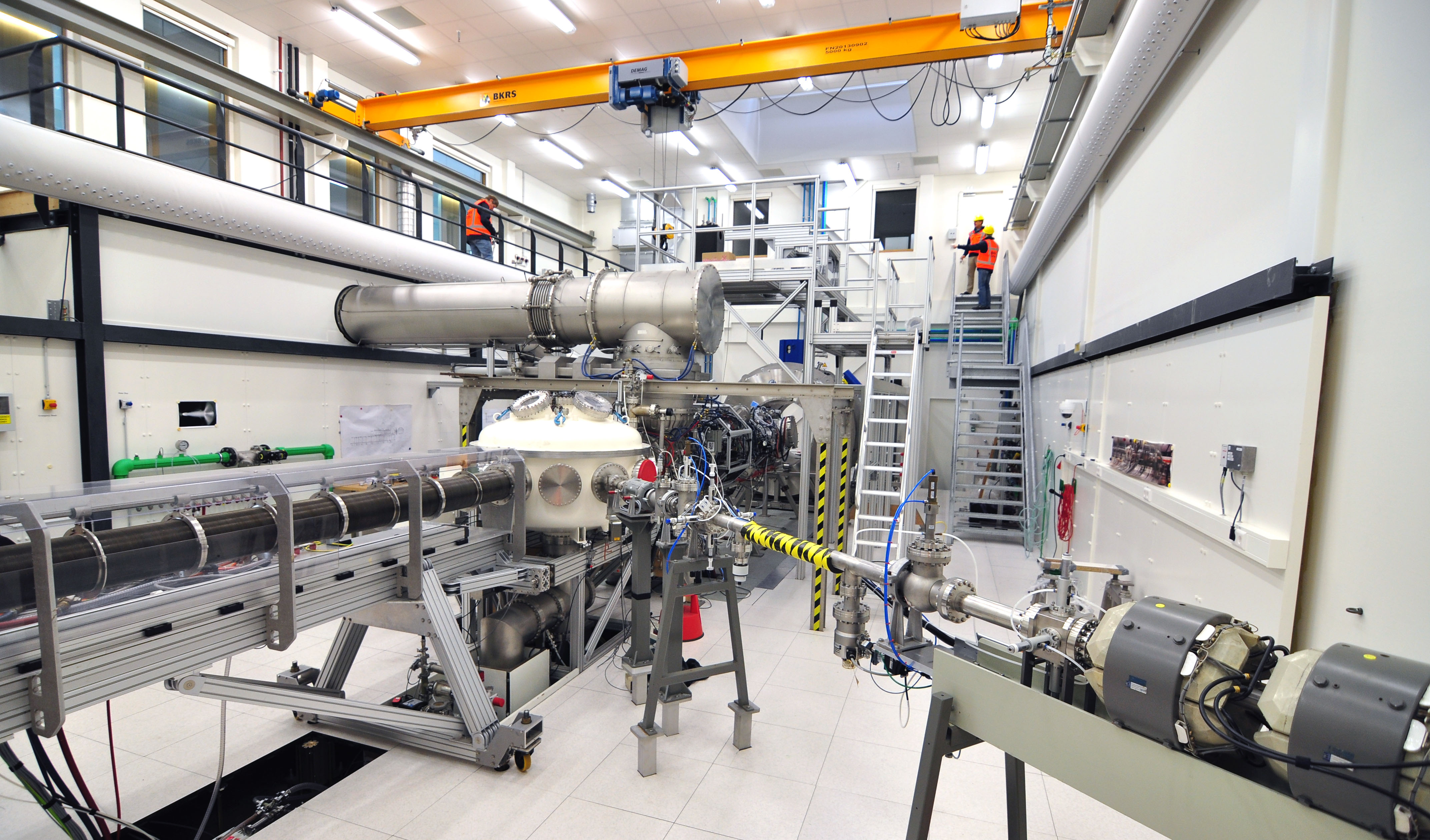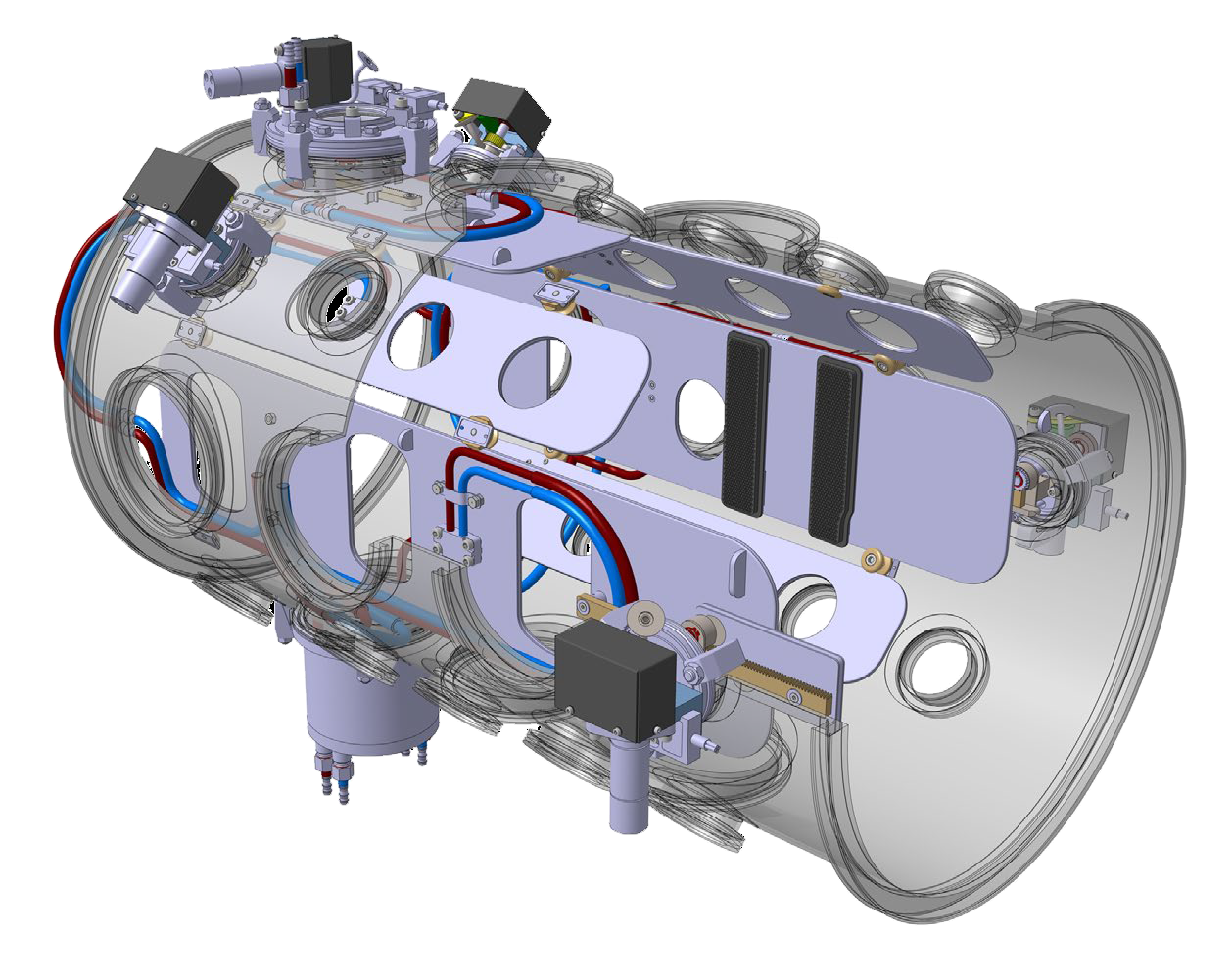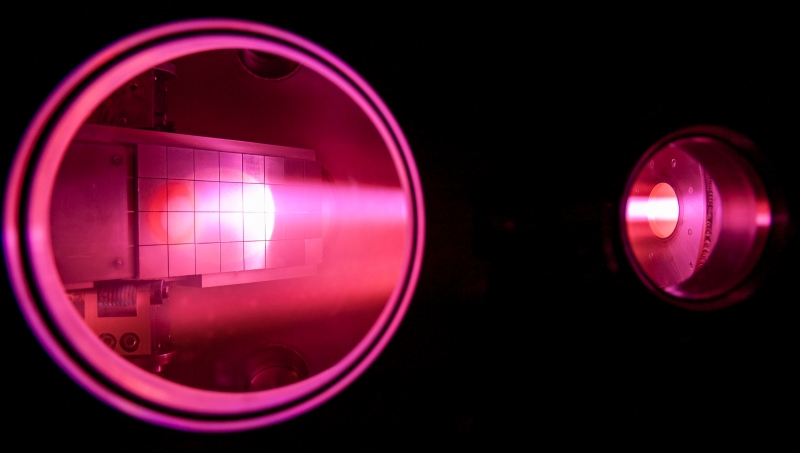After the successful delivery of Magnum-PSI's new superconducting magnet in October 2016, DIFFER's main research facility to study Plasma Surface Interactions is now being commissioned for its first experimental campaign in its new location.

(beam line lower right)
Magnum-PSI is designed to expose candidate wall materials for ITER and its successors to the intense plasma's expected at the exhaust of these future fusion reactors. With its plasma beam confined by the newly delivered superconducting magnet, Magnum-PSI can operate for hours on end to enable the first lifetime studies of fusion materials in a laboratory environment.
Integrating the superconducting magnet with Magnum-PSI's other systems was a careful undertaking, explains facility manager Hans van Eck. Cooling down the system to its operating temperature of 4 Kelvin took two weeks of pre-cooling with liquid nitrogen to reach 90 Kelvin, then two more weeks of cooling with liquid helium. Once cooled, a set of cryocoolers keep the magnet from warming up. As part of the site acceptance test, the magnet was ramped up to its maximum field of 2.5 Tesla on 23 November.
First record
Van Eck: "We are very proud of the progress we have realised. Just before the holiday season, we reached our milestone of first magnetised plasma. This was not at the magnet's full 2.5 Tesla yet - that is the hardest test for the facility - but in this 20 minute exposure we already broke Magnum-PSI's record of longest continuous plasma pulse ever." In January, further commissioning gave the team the confidence to push for ever longer and more intense plasma's. The restart of experiments is drawing near.

viewing ports from the harsh plasma environment.
Minor setback
In the commissioning of an experiment as complex as Magnum-PSI, not everything goes as smoothly as the team would have wished. The pneumatic drivers for the window shutters, for instance, turned out to contain components that were not up to the full field of the new magnet - at DIFFER's previous location, Magnum-PSI's conventional magnets only reached fields of 1.2 Tesla for tens of seconds. New components will have to be ordered or designed and built by the in-house workshop. Van Eck: "A setback, but given the facility's complexity, this is a minor one."
Sturdy source
If the stuttering shutters were a setback, the team is pleasantly surprised by the smooth operation of Magnum-PSI's plasma source. Its previous magnet system was only switched on after the source had successfully ignited, while in the new configuration the magnet is already active. "We were not sure how the source would handle that, but it switched on without a problem and is performing flawlessly. Definitely happy news for me."
Plans for the experimental campaign
In March, Magnum-PSI will undertake its first actual experiments in its new superconducting configuration. "One of our first experiments will be a long-term exposure of ITER's candidate wall material tungsten to the plasma", says van Eck. "We can produce plasma's so intense and for so long that we can explore a sizeable part of their lifetime in ITER. This has never been done before and we want to be the first to see how the material will evolve under such extreme conditions. But before we can, we want to ensure that we can ensure stable plasma conditions for hours on end."
"In essence, it is a fully new device and we are still getting to know it. What are the plasma conditions we can deliver, how do they depend on the settings of the vacuum pumps, magnetic field and current through the plasma source? Getting to know the parameters and performance is our primary task."

in Magnum-PSI in its previous experimental campaign.
Connecting the Ion Beam Facility
A completely new diagnostic for Magnum-PSI is the connection to DIFFER's neighboring Ion Beam Facility. The beamline was connected mid-2016 and the final diagnostics are now being installed in Magnum-PSI's Target Exchange and Analysis Chamber. Currently, these can only be used when the superconducting magnet is offline, because of its influence on the charged beam. In the future the team wants to be able to perform ion beam analysis while running the superconducting magnet. This requires passive shielding of the beamline up to Magnum-PSI, and active control of the beam inside the Target Exchange and Analysis Chamber. Design of the shielding and control system is ongoing.
Go to the News page.